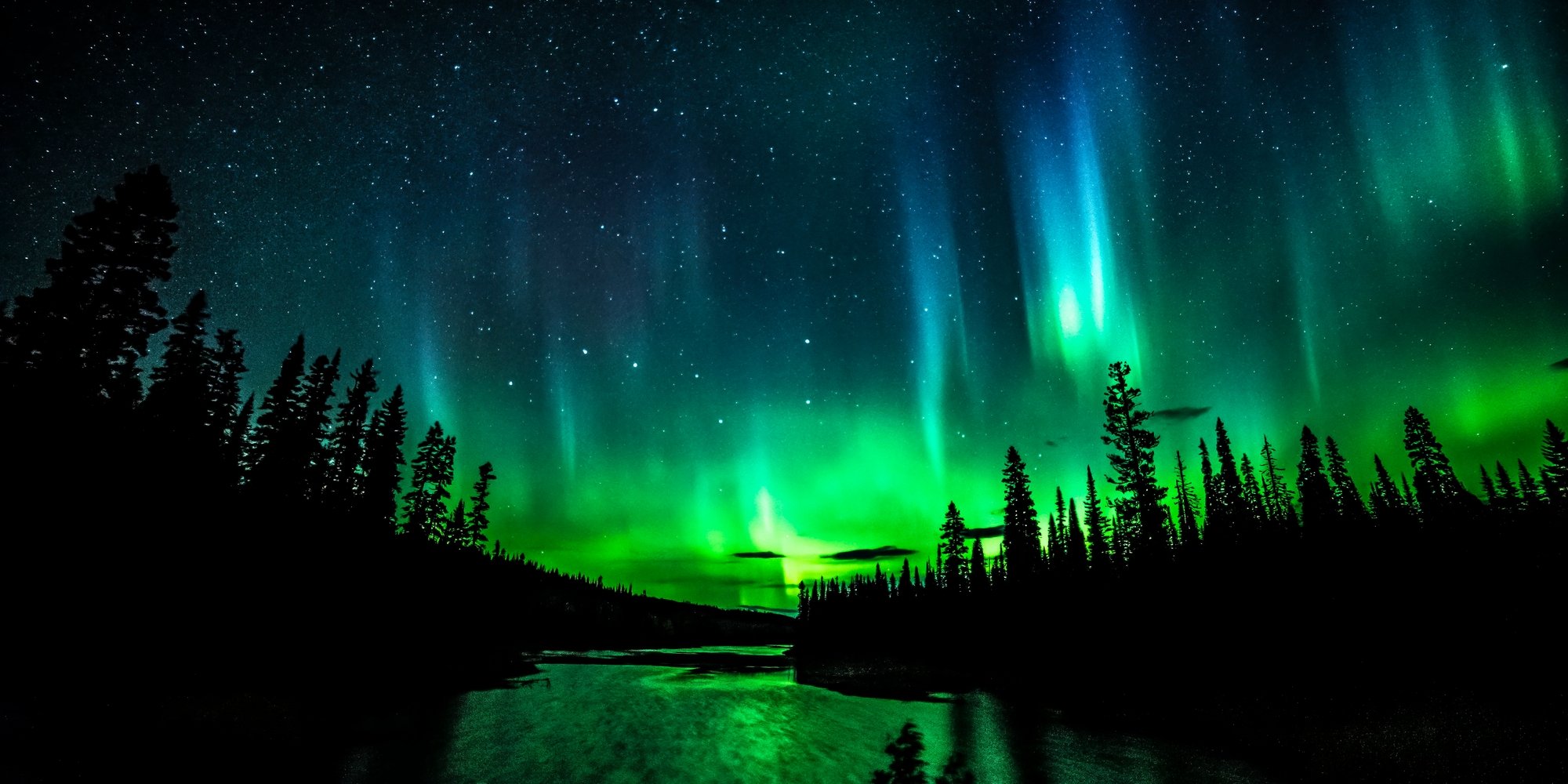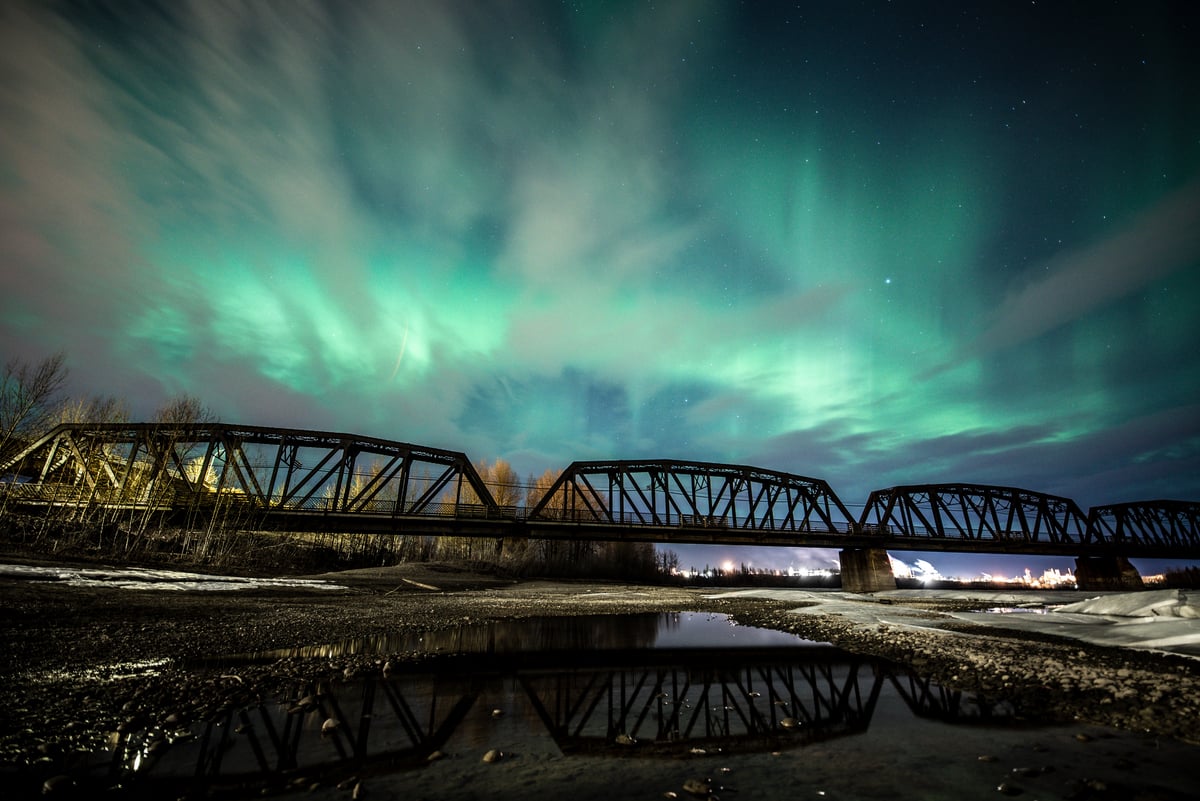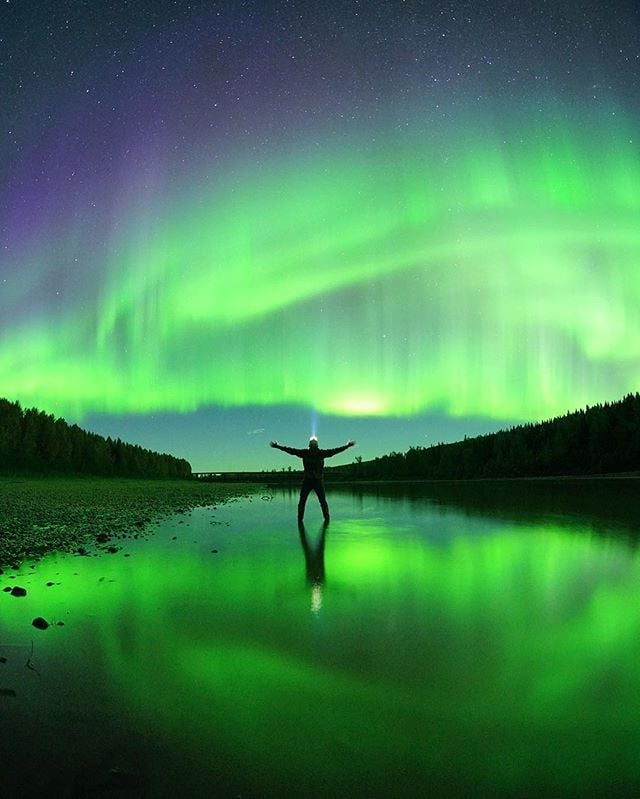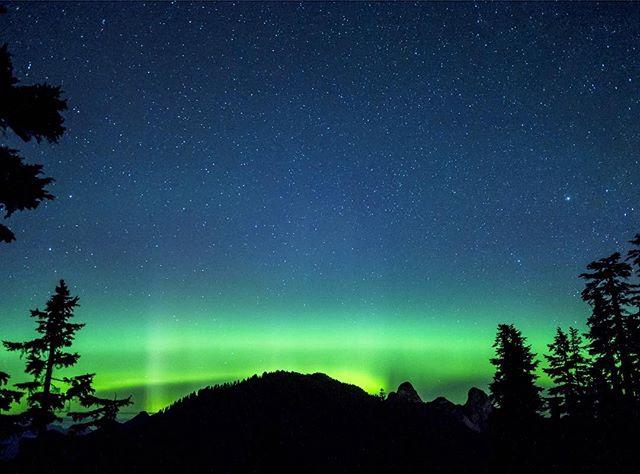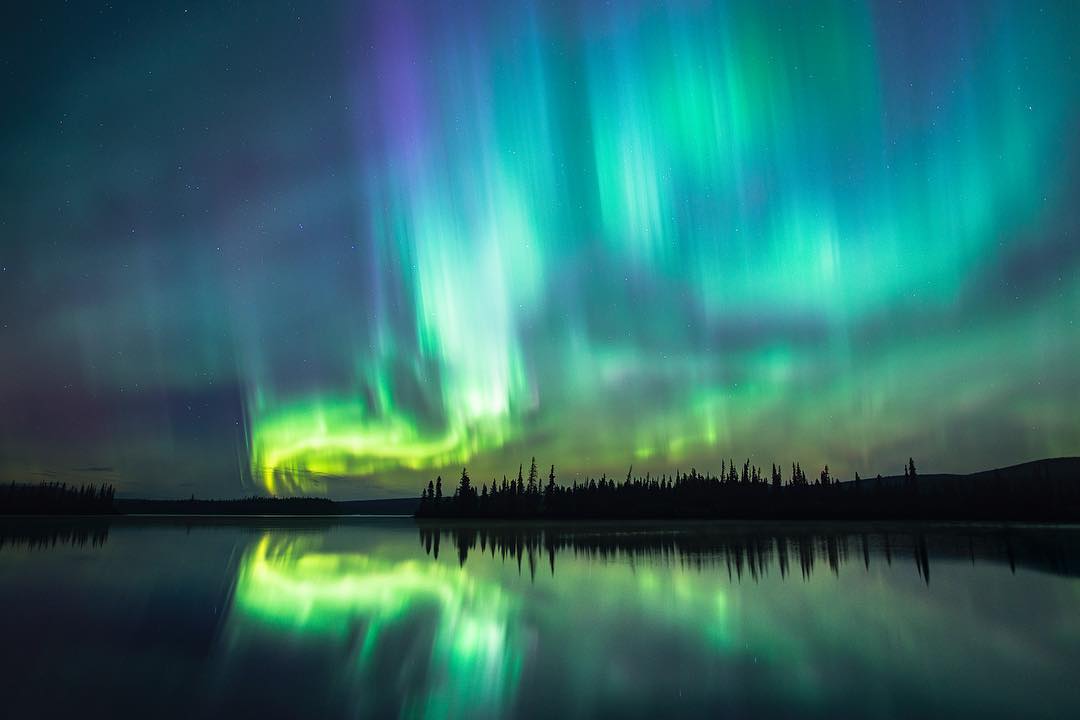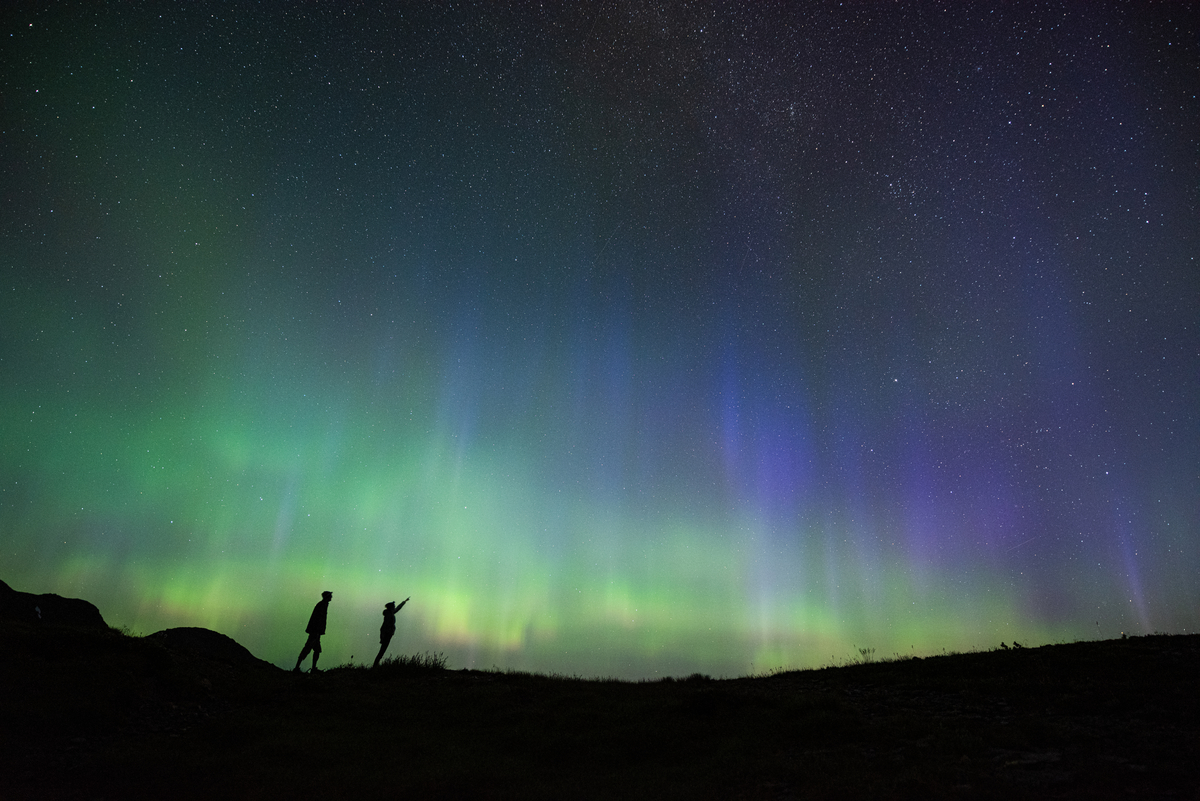Alaska Highway
From Mile Zero in Dawson Creek to the Liard River Hot Springs near the BC/Yukon border, communities along the storied Alaska Highway make for some of the best locations in BC from which to view the Northern Lights.
Located in northeastern BC’s Peace River Country ranchland, small-town Dawson Creek is a base camp for hiking, skiing, fishing, and birding. It also boasts numerous historic sites, plus wide-open skies ideal for watching the Aurora.
Visitors report Northern Lights sightings year round at picturesque Muncho Lake Provincial Park off the Alaska Highway; here, unusual geography, including “folded mountains,” sets the scene. Take up residence at log-hewn Northern Rockies Lodge for a few days, and, if you’re lucky, see the lights reflecting off aqua-green Muncho Lake.
Liard River Hot Springs, farther north, is a bucket-list must. Romantic in a rustic-wilderness way, these steamy natural thermal pools are Canada’s second largest. Some have not only witnessed the Northern Lights for hours here, but observed a rare red Aurora. Soak in the springs, and don’t forget your snowshoes.


